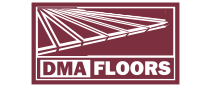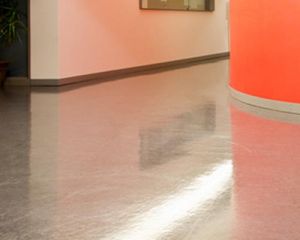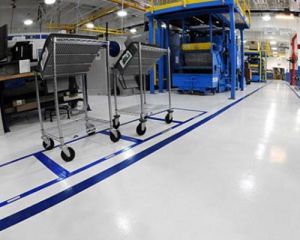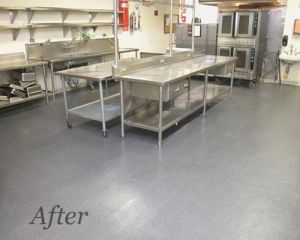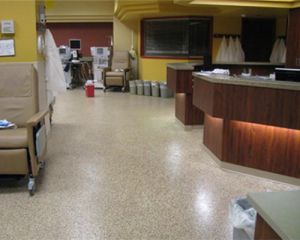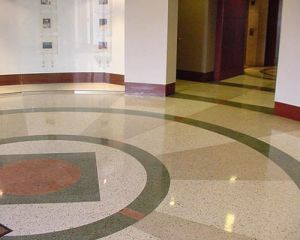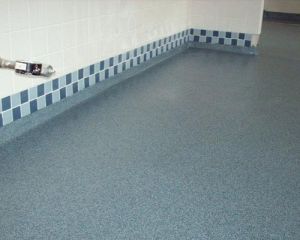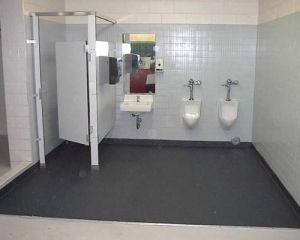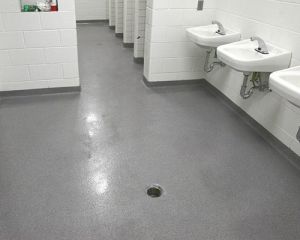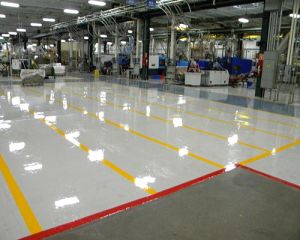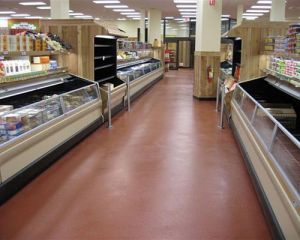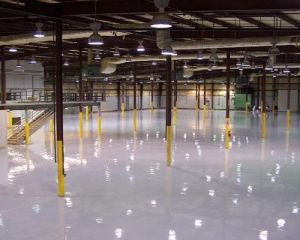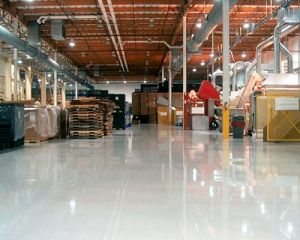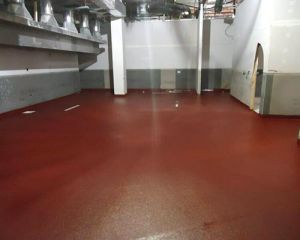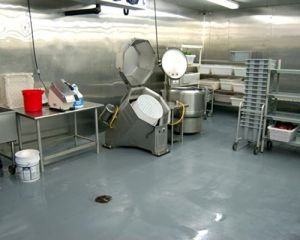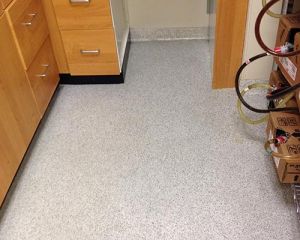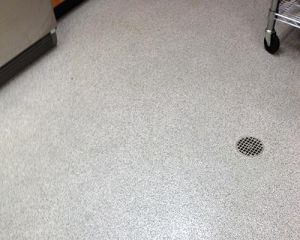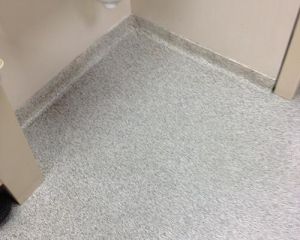Conditions
Some of the conditions that should be taken into consideration include; chemical resistance, traffic conditions, wet or dry environment, UV exposure, maintenance regimen, substrate condition, and aesthetics.
Chemical Resistance
Typically thicker systems will be more resistant to chemicals, but the chemistry of the system plays an equally if not more important role in chemical resistance. Novolac epoxies, chemical resistant urethanes and polyaspartics usually have the highest chemical resistance.
Traffic Conditions
Expected use and abuse are extremely important in ensuring that you specify the right system. Steel versus rubber wheeled traffic, and high impacts can affect what chemistry, aggregate type and application methods will give you the best performance
Wet or Dry Environment
Slip resistance is imperative in a wet environment and will dictate the size and type of aggregate used. Ease of cleaning is inversely proportional to skid resistance and must be balanced with the needs of the owner. In wet environments it also may be necessary to have a waterproof epoxy membrane barrier below the aggregate layer.
UV Exposure
Epoxies have a tendency to yellow or amber when exposed to UV light. Urethanes and polyaspartics are often used as a topcoat to help reduce this effect. Broadcast systems also generally display less of this effect.
Maintenance Regimen
When they clean, how they clean, what they clean with, and what they are willing to change about these can impact what system will work as well. Recall that the higher the degree of slip resistance, the harder the floors are to clean. This needs to be understood and agreed upon.Unlike floor finishes that are manufactured in bulk, resinous systems can offer the flexibility of combining systems and finishes to create the look, texture, and performance characteristics that work best for the environment.
Substrate Condition
All of these systems, except thin mil, require shot blasting, scarifying, or milling of the substrate to provide adequate bond profile. Weak or deteriorated concrete (i.e. too high water/cement ratio) can provide a very bad candidate for shot blasting and coating. Moisture vapor emissions can also be a problem with resinous systems. There are systems available that are not affected by moisture vapor and systems to remediate high moisture levels as well.
Aesthetics
Thin mil systems are typically solid colors, but metallic pigments, flake broadcast and clear systems over decorative stains can create beautiful decorative finishes. Slurry/Broadcast and mortar systems can use a variety of pigments and different colored aggregates. Divider strips can also be used to create patterns or pictures. Mortars are typically limited in colors, but can be seeded with colored quartz. Epoxy Terrazzo can use any color matrix and aggregate chip combination as well as divider strips for patterns and pictures.
Other Considerations
- Vibration from Machinery
- Secondary Containment
- USDA/FDA Requirements
- Conductivity/Static Control
- Thermal Shock
- Light Reflectivity
- Microbial Control
- “Soft” or “Comfort” Concerns
All of these considerations can affect the chemistry as well as the overall type of system that is best for you. Some of them may have to be weighed as needs versus wants due to budget restraints and conflicting features and should involve the end user. DMA Floors can help you work with the end user to understand their needs and help set expectations when selecting the right system.
